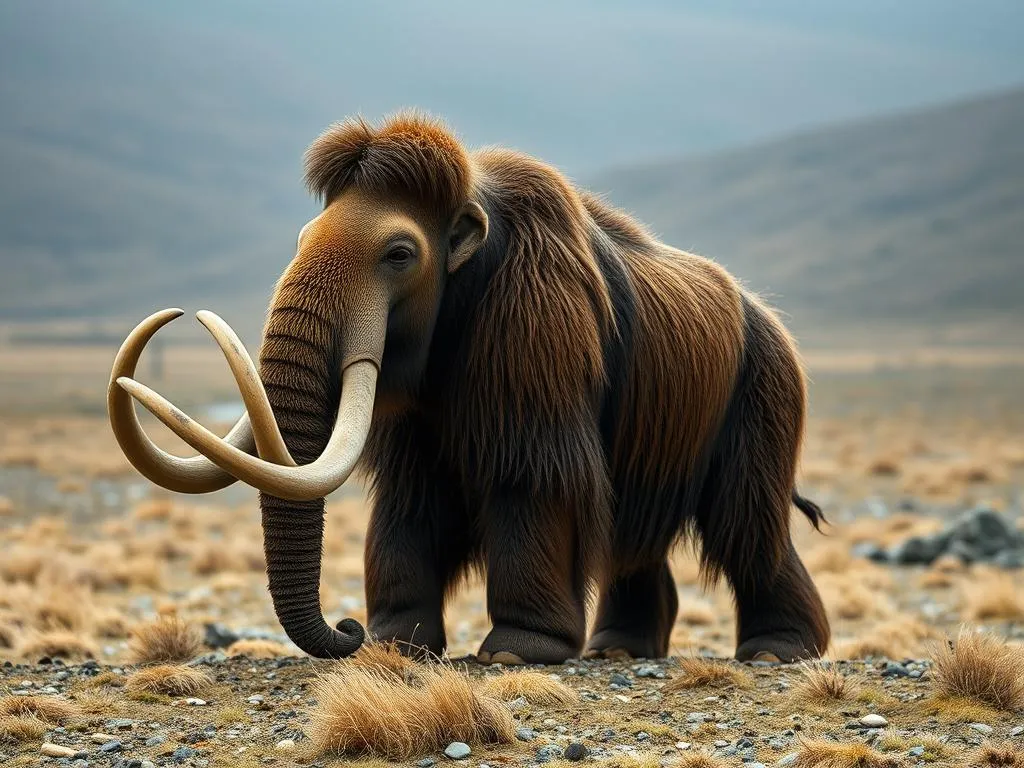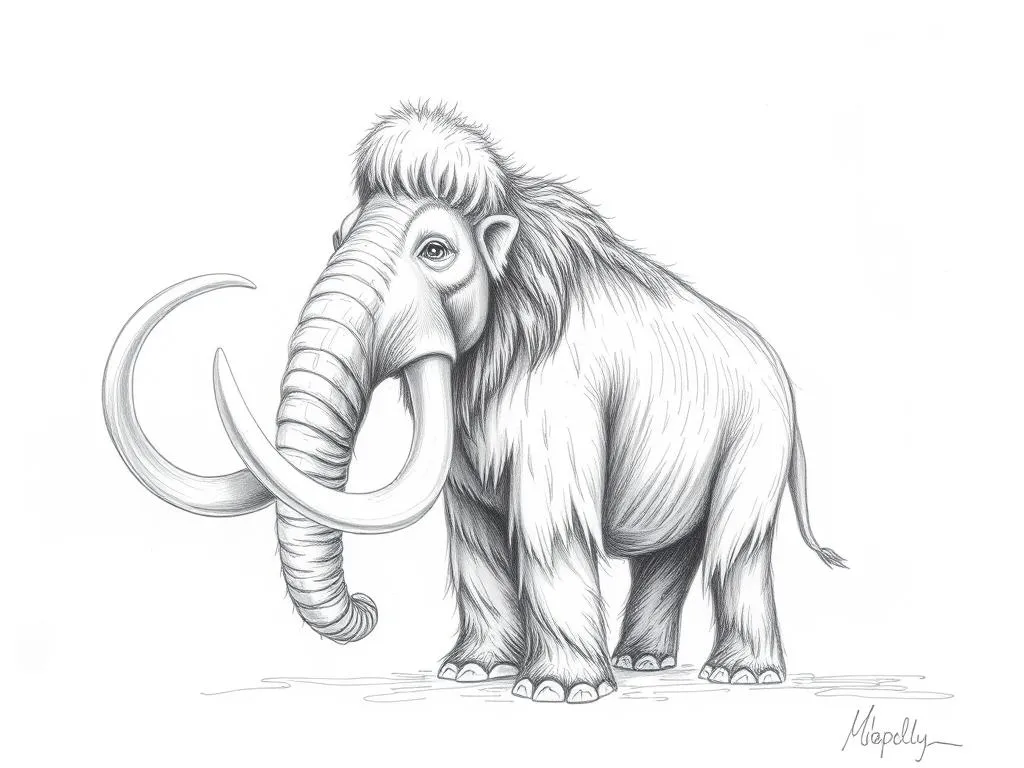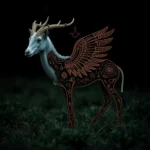The Woolly Mammoth: Emblems of Resilience and Memory

Disclaimer: Some images on this website are AI-generated artworks and may not accurately represent real animals.
The woolly mammoth, a magnificent creature that roamed the Earth during the last Ice Age, is not only a symbol of prehistoric life but also a powerful emblem of resilience and memory. As we delve into the significance of the woolly mammoth, we uncover its historical context, physical characteristics, and cultural symbolism that continues to resonate in our modern world.
Understanding the Woolly Mammoth
Historical Overview
The woolly mammoth (Mammuthus primigenius) emerged around 400,000 years ago and thrived in the cold tundra regions of North America, Europe, and Asia. These massive mammals were well-adapted to their frigid environment, with long, shaggy fur, a thick layer of fat, and a unique ability to navigate snowy landscapes. They were herbivores, primarily feeding on grasses, shrubs, and other vegetation found in their habitat.
The extinction of the woolly mammoth approximately 4,000 years ago had significant implications for biodiversity. While climate change and human hunting played critical roles in their decline, the loss of these majestic creatures also marked a shift in the ecosystems they once inhabited. Their disappearance serves as a poignant reminder of the fragility of life and the intricate balance of nature.
Physical Characteristics
The woolly mammoth was an impressive sight, standing up to 13 feet tall and weighing as much as 6 tons. Their most striking features included:
| Feature | Description |
|---|---|
| Fur | Thick, long hair adapted for cold climates |
| Tusks | Curved, elongated tusks used for foraging |
| Size | Similar in size to modern African elephants |
| Body | Stocky, robust build for insulation and strength |
In comparison, modern elephants—both African and Asian—share a common ancestor with woolly mammoths. However, the adaptations of the woolly mammoth to cold environments distinguish them from their warm-climate relatives. The thick fur, layer of fat, and specialized tusks highlight their evolutionary journey, making them a notable example of nature’s ingenuity.

Symbolism & Spiritual Meaning
Resilience and Survival
The woolly mammoth embodies resilience and survival in the face of adversity. Their ability to thrive in one of the harshest climates on Earth speaks to their endurance. The mammoth’s survival tactics, such as migrating in herds and utilizing their tusks to dig through snow for food, provide valuable lessons in adaptability and perseverance.
In many cultures, the woolly mammoth symbolizes the strength to overcome obstacles and the tenacity required to face life’s challenges. Their legacy is a reminder that even in the darkest times, life finds a way to persevere.
Memory and the Past
The connection between the woolly mammoth and ancient cultures is profound. Prehistoric peoples revered these creatures, often depicting them in cave paintings and using their bones and tusks for tools and art. The mammoth’s presence in folklore and mythology emphasizes its significance as a symbol of memory and the past.
In various indigenous cultures, the woolly mammoth is viewed not only as a physical entity but also as a spiritual guide. Their remains, often uncovered in permafrost, evoke reflections on ancestry and the continuity of life across generations. The mammoth serves as a bridge between the past and present, reminding us of our roots and the stories that shape our identities.
Strength and Protection
The immense physical strength of the woolly mammoth translates into a powerful symbol of protection and community. Just as mammoths traveled in herds, often caring for their young and protecting each other, they represent the importance of familial bonds and community strength.
In many spiritual traditions, the mammoth is seen as a guardian spirit, embodying the protective qualities that can shield individuals from harm. This association with strength encourages individuals to seek support from their communities during challenging times and to foster connections that build resilience.
Woolly Mammoth in Dreams
Interpreting Mammoth Dreams
Dreams featuring the woolly mammoth often carry profound symbolism. Common themes associated with mammoth dreams include:
| Theme | Symbolic Meaning |
|---|---|
| Strength | Inner resilience and personal power |
| Memory | Reflection on the past and ancestral ties |
| Protection | Seeking safety and support from loved ones |
| Change | Transformation and adaptation to new circumstances |
Encountering a woolly mammoth in dreams can evoke a sense of awe and respect. Such dreams may signify a need for strength in facing challenges or a reminder to honor one’s heritage and the lessons learned from ancestors.
Messages from the Subconscious
The presence of the woolly mammoth in dreams can serve as a powerful message from the subconscious. These dreams often encourage individuals to tap into their inner strength and resilience. They may highlight the importance of remembering where one comes from and the lessons that history can teach.
Furthermore, mammoth dreams can prompt reflections on personal growth and evolution. Just as the woolly mammoth adapted to its environment, individuals may be inspired to embrace change and transformation in their own lives. This connection to ancestral heritage is a reminder to honor the past while forging a path forward.
Modern Interpretations
Cultural Representations
In contemporary society, the woolly mammoth appears in various forms of art, literature, and media. From children’s books to blockbuster films, the mammoth captivates audiences with its grandeur and mystery. These representations often emphasize themes of resilience, memory, and the interconnectedness of life.
The woolly mammoth has also become a symbol of environmental awareness. As discussions surrounding climate change and extinction become increasingly pressing, the mammoth serves as a reminder of the consequences of human actions on biodiversity. Its portrayal in modern culture invites reflection on our responsibility to protect endangered species and preserve the natural world.
Conservation and Science
The concept of de-extinction has sparked significant interest in the woolly mammoth. Scientists are exploring the possibility of cloning these iconic creatures using advanced genetic techniques. The potential revival of the woolly mammoth raises important ethical questions about conservation, biodiversity, and the implications of playing God in nature.
Moreover, the woolly mammoth’s relevance extends beyond scientific curiosity; it serves as a focal point for discussions about habitat preservation and the impact of climate change. The desire to bring back the woolly mammoth highlights the urgent need to protect existing species and their ecosystems to prevent further extinction.
Key Takeaways
The woolly mammoth continues to hold significant symbolism in both historical and modern contexts. Here are some key takeaways regarding its symbolism and meaning:
- The woolly mammoth embodies resilience, serving as a reminder of strength in adversity.
- Its connection to memory highlights the importance of honoring our past and ancestral ties.
- The mammoth represents strength and protection, emphasizing the value of community and familial bonds.
- Dreams featuring the woolly mammoth encourage reflection on personal growth and adaptation.
- Modern interpretations reinforce the need for environmental conservation and awareness of biodiversity.
Conclusion
The enduring significance of the woolly mammoth resonates deeply within our cultural consciousness. As we reflect on its symbolism of resilience, memory, and strength, we are reminded of the lessons this magnificent creature imparts. Embracing the legacy of the woolly mammoth encourages us to honor our past while forging connections that empower us to navigate the challenges of the present and future. The woolly mammoth remains a powerful emblem of life’s capacity for endurance and memory, inspiring us to embrace our own journeys with courage and strength.







